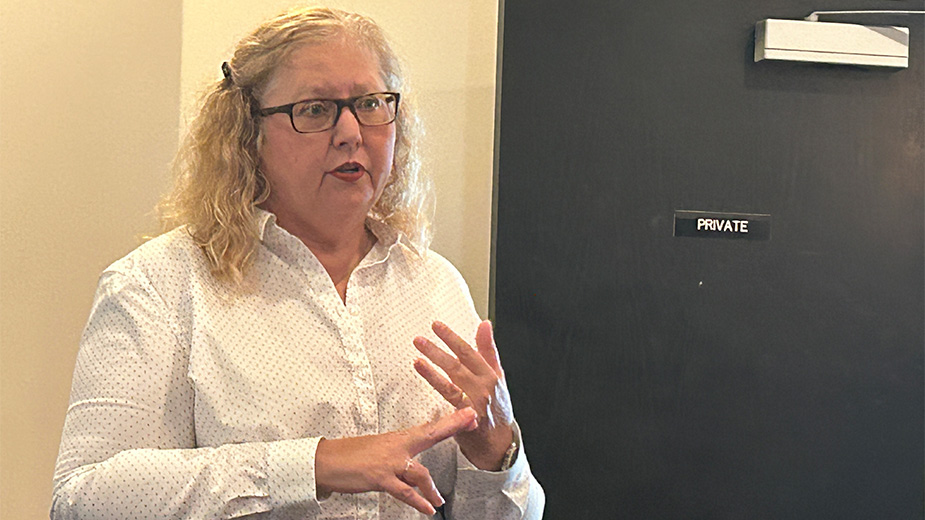CPAs Weigh Benefits, Costs of Tax Law
YOUNGSTOWN, Ohio — At 184 pages, the stack of proposed regulatory changes related to the Tax Cuts and Jobs Act of 2017, or TCJA, represents one of the biggest tax law changes that William Vennetti has seen in his 23 years as a certified public accountant.
“It’s a game changer,” says the principal at Packer Thomas Certified Public Accountants & Business Consultants. “It created a whole new set of rules. Planning for businesses should have started right after the law was passed.”
The TCJA reduces the corporate income tax rate to a flat tax of 21%, which creates “new opportunities” that accountants can help their clients take advantage of, he says. With tax season around the corner, Vennetti recommends business owners work closely with public accounting firms to understand how the changes affect them personally as well as their companies. Accountants have been working closely with clients all year to help them maximize their benefits.
One of the major components of the law, the 199A deduction, requires the most planning, he says. It allows owners of pass-through businesses, such as S corporations, partnerships and limited liability companies, to take up to a 20% deduction on qualified business income. However, not all businesses are eligible for the 199A. Medical practices, attorneys and accounting firms are excluded.
To understand the complexities of the new law, Packer Thomas, which has offices in Canfield and New Castle, Pa., held an in-house training session to get staff up to speed. Eight hours of training were dedicated to the 199A deduction alone.
“We feel we have a good understanding” of the law, Vennetti says, although some uncertainty remains. As with any change in tax law, it will take years to iron out the ambiguities, he says. He expects the 199A to evolve over time and “we’ll get additional guidance as things develop.”
One ambiguity relates to the new set of aggregation rules included in proposed regulations released by the Internal Revenue Service in October. Specifically, what types of businesses can be grouped together and treated as one for the new 199A deduction.
Currently, there is no “hard and fast” answer, Vennetti says. “They’re so vague that you have to meet two or three specific tests. They’re very gray, in my opinion. That’s a major thing that we’re looking at.”
With taking advantage of the new qualified business income deduction, there are different ways to group businesses together, says Nick Demetrios, principal at HBK CPAs & Consultants in Canfield. Shared businesses and employees can be grouped to maximize deductions in various scenarios.
“There’s additional analysis that will need to be done for business owners, especially those that have multiple holdings,” Demetrios says. “From our perspective, it’s going to be more difficult. There’s more information that we need to get out to help people take advantage of these things.”
One consideration is changing a client’s business type – for example, switching from a pass-through, or flow-through, entity to a C corporation. Often, clients are kept as a flow-through because “in many cases it may be more tax efficient to take money out of their flow-through business, as opposed to it being a taxable dividend,” he says.
That’s compared to a C corporation, which “have to pay tax twice,” he says – once on a corporate tax return and again on the shareholder’s individual return upon receipt of a dividend.
Infrastructure adds another layer of concern, says Judy Sees, a principal at Schroedel, Scullin & Bestic LLC in Canfield. While the changes are extensive, software providers “have had plenty of time to implement calculations” to handle the new computations, she says.
However, the IRS still has only drafts of many needed forms, she says. Until the final forms are released, there is uncertainty as to how they need to be formatted, the nuances of the calculations and the extent of the information required, she says, which could lead to a delay.
“If a delay does occur, it will only serve to increase the crunch process,” she says. “Tax filing season is short enough. So any delay really backs up the whole process.”
Should Congress hand down any additional tax law changes that don’t come about until the end of December, that could prevent brokerages from delivering reports in a timely manner, shes notes.
“Brokerage statements are often delayed until mid-March,” she says. “That puts a crunch on getting everyone’s returns done by April 15th.”
The crunch can be even tighter for returns of pass-through entities, which have a March 15 due date, she says. Delays increase the likelihood of a need for an extension, which will require tax preparers to work harder to get individual returns done on time, she says. And business owners are typically more concerned about their individual return and any taxes they owe.
“A lot of times people don’t want to extend their individual tax returns,” she says. “As long as their business returns are done, they’re happy.”
Given the complexities of the tax law, people shouldn’t attempt to file taxes on their own, she says. She’s seen self-prepared returns with deductions that are missing or incorrectly computed, including the business income deduction in Ohio, she says.
“The same thing is going to occur with the 199A deduction,” she says. “Quite a few people will come to us because they have been preparing themselves and realize it’s become too complex.”
One of the biggest concerns is limitations on certain deductions for individuals, says Packer Thomas’ Vennetti. While Ohio is “not a high income-tax state,” he says, clients who have businesses and are domiciled in states such as California and New York are looking closely at the limitation of the law on state and local tax, or SALT, deductions.
In August, the IRS proposed regulations to address attempts of some states to work around the SALT limitation. Specifically, taxpayers would donate to state-run charities to receive a credit against state taxes as well as a deduction for a charitable contribution for their federal income taxes. Vennetti doesn’t think it will work.
“Ultimately, that’s going to fail,” he says.
Another way taxpayers will take a hit is with the elimination of investment management fees deductions, he says. Large investment portfolios usually include wrap fees, broker fees and asset-management fees, he says, which are no longer deductible.
“Say it’s a high-net-worth client who has a $10 million portfolio,” he says. “It’s not uncommon for those fees to be 1%. So that used to be a $100,000 deduction that they no longer get.”
Overall, people will be operating with a substantial tax cut and “they will be very happy with it,” he says. He views this as an opportunity to help clients reduce their debt burdens and figure out ways to pay their employees more, he says. He’s already had many conversations with clients about enhancing employee-benefit packages and investing new capital.
One “good bipartisan effort” that came out of the TCJA was the creation of Qualified Opportunity Zones, says HBK’s Demetrios.
“Most commentary we have seen on these opportunities projects hundreds of billions of dollars to flow into business and real estate investments in these zones that have been designated by the state governments and disseminated by the IRS,” he says.
By directing resources to specified economically depressed areas through Opportunity Funds, investors can enjoy deferral of capital gains and a potential reduction of the amount of gain realized through a basis adjustment. And while there will eventually be increases in basis that can be achieved, individuals can “defer paying tax on the gain all the way to 2026,” he says.
“You can even elect after that to defer any additional post-2026 appreciation on the asset, if you hold it for 10 years, to not pay tax on that additional gain,” Demetrios says.
Taxpayers will have the ability to defer tax and shelter appreciation on an asset while investing in communities “and creating jobs and businesses and revitalizing,” he says. Before the IRS issued proposed regulations in October, many clients had questions and kept their money on the sidelines, he says. But in the last few weeks, Demetrios was presented with several large potential investment transactions.
Those transactions range from $10 million to $30 million of deferred gain, many of which are commercial real estate and hotels, he says. He’s been in contact with clients from Florida and the Mid-Atlantic region. Involvement in things such as opportunity zones has never been this widespread, Demetrios says.
“If you have something that you’re looking to sell and you can sell it and defer taxes to create a new investment and have it be beneficial to your community, it seems to be working well,” he says.
As companies and individuals see “meaningful decreases in their taxes,” clients with more working capital are investing in their companies. “We’ve been busy all year because of that. So it seems the intention of the tax cuts is providing people the ability to make those decisions,” he says.
And companies will benefit from writing off the cost of certain property purchases, says SSB’s Sees. The TCJA increased deductions on qualified section 179 property to $1 million, up from $510,000, and expanded the definition of “qualified property” to include certain improvements of nonresidential real property, such as roofs, HVAC, fire protection and alarm systems, and security systems.
“Some businesses may be able to simplify their accounting methods,” Sees says. “We’ll have to look at each of our business clients to see if they qualify.”
Looking beyond 2018, Sees recommends working with a CPA on the timing of deductions to maximize benefits. If certain itemized deductions don’t exceed the standard deduction threshold – $12,000 for individual, $24,000 for married couple – then she recommends bunching them.
“A lot of people find that timing their deductions, particularly charitable contributions, every other year allows them to itemize every other year rather than never crossing that threshold because you’re just under it,” she says.
Copyright 2024 The Business Journal, Youngstown, Ohio.



